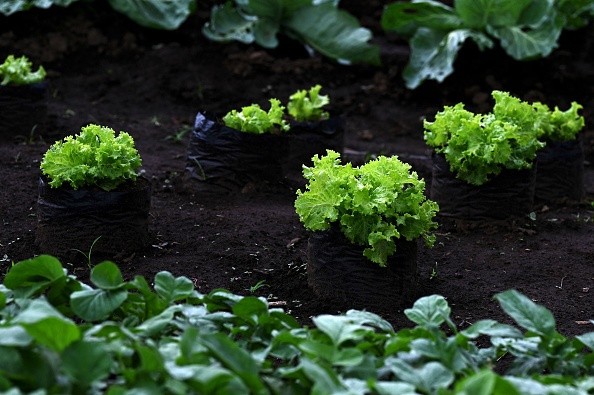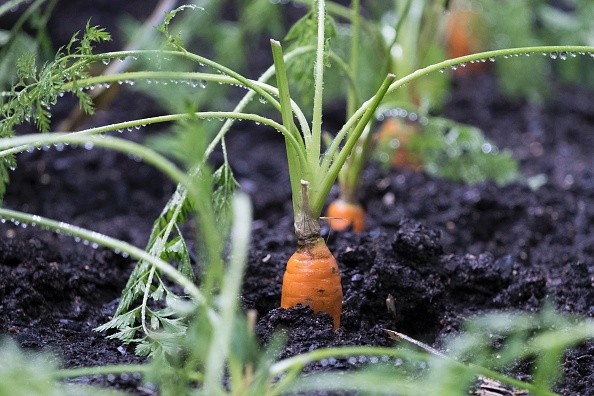Can food crops thrive in the dark? Researchers are figuring it out. According to experiments, a technology that might one day help feed astronauts and a crowded planet is the possibility of sustaining plants without photosynthesis.

Hopes for Food Production
Science fiction tales have depicted humans from the future residing in free-floating space stations, asteroids with hollowed out interiors, and underground cities on Mars. However, if humans are ever to survive in hostile and foreign environments, they will need to find ways to grow food while making the most of scarce resources; photosynthesis, the wildly successful but energy-inefficient process by which plants convert sunlight into sugar, may not be sufficient.
Some scientists are now considering whether growing plants in the dark instead of photosynthesis might allow for more effective food production.
The concept is as far-fetched as cities on Mars. With a study released in Nature Food in June, a team of researchers has made a first step toward realizing it. According to the research, it is feasible to grow algae, edible yeast, and fungus that produce mushrooms in the dark by providing them with acetate. This carbon-based chemical is not derived from plants but is made using solar energy.
The researchers are optimistic that this technique, a form of "artificial photosynthesis," could open up new opportunities for food production that require less physical area and energy than conventional agriculture-possibly even crops that can grow in the dark.
Other experts are delighted by the technology the researchers have developed and the team's novel notion for increasing the efficiency of food production. Still, they are doubtful that it would ever be able to restructure plant biology so fundamentally.
Also Read: Plant-Based Alternatives May Cut Emissions More than Any Other Green Investments
Sun as the Source of Life

All life on Earth is powered by the sun, except for a few extreme situations like deep-sea hot springs, which are sustained by the chemical energy of hydrogen sulfide erupting out of fissures in the seafloor. Even apex predators like tigers and sharks are a part of intricate food webs that can be traced down to plants and, in the case of the oceans, microscopic green algae.
These so-called primary producers have a biological superpower that allows them to convert carbon dioxide into organic carbon through a biochemical process called photosynthesis, which is fueled by sunlight.
However, even though photosynthesis is necessary for life as we know it, it is not very effective; only a small portion of the sunlight that hits plants is collected and converted into organic carbon. If humans are ever to create a self-sustaining presence in space, it will be challenging to generate food using as few resources as possible due to this inefficiency.
As the human population increases and farmers are under pressure to produce more food from the same amount of land, it is also an issue on Earth.
Genetic Modification
Some experts think genetically modifying crops to photosynthesize more effectively will provide a solution. The current study's authors suggest replacing biological photosynthesis with a partially artificial method of converting sunlight into food, which is more novel.
They use a technique known as artificial photosynthesis, which has been around for a while and refers to various methods for transforming light, water, and CO2 into liquid fuels and compounds like formate, methanol, and hydrogen. The authors of the new study claim that this is the first time an artificial photosynthesis system has been used in conjunction with an effort to cultivate widespread food-producing plants.
Their method is based on electrolysis, which utilizes an electrolyzer to use an electrical current to drive chemical processes. In their most recent research, the scientists developed a two-step electrolyzer system that uses solar energy to transform carbon dioxide and water into oxygen and acetate, a simple carbon-based molecule.
The authors then gave the photosynthetic green alga Chlamydomonas reinhardtii this acetate. Additionally, they supplied acetate to fungi that produce mushrooms and nutritional yeast. These organisms don't photosynthesize on their own and often need the organic carbon produced by plants to flourish.
These organisms could absorb the acetate and develop without light or carbon produced by photosynthetic processes.
Related Article : Artificial Photosynthesis May Help Combat Food Shortage by Producing Food Without Sunlight
For more news update about alternative lifestyle and the environment, don't forget to follow Nature World News
© 2025 NatureWorldNews.com All rights reserved. Do not reproduce without permission.





